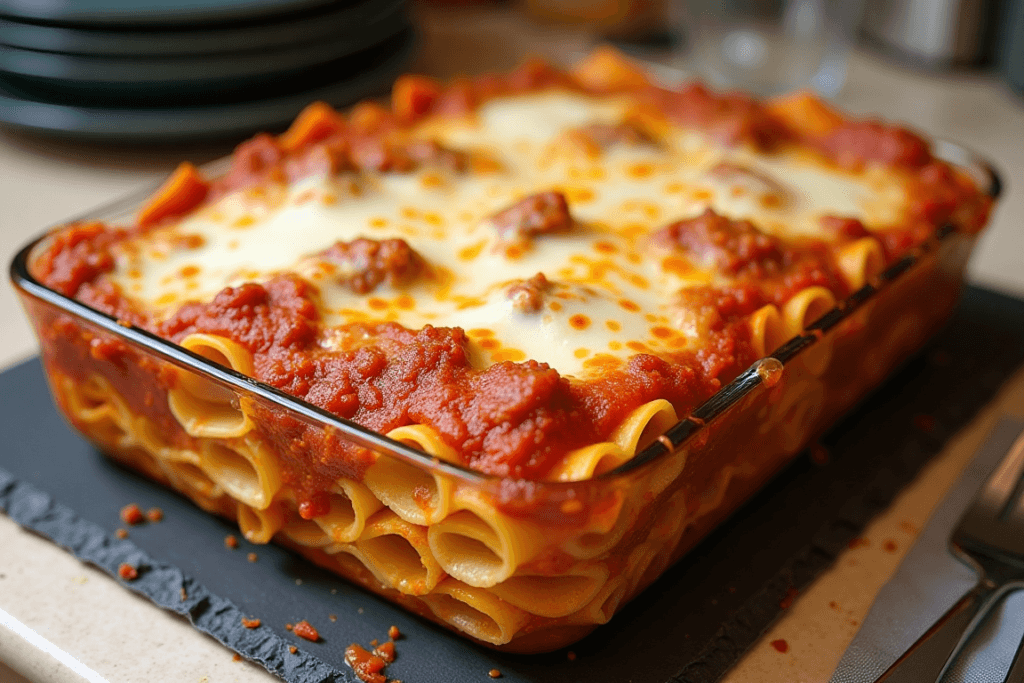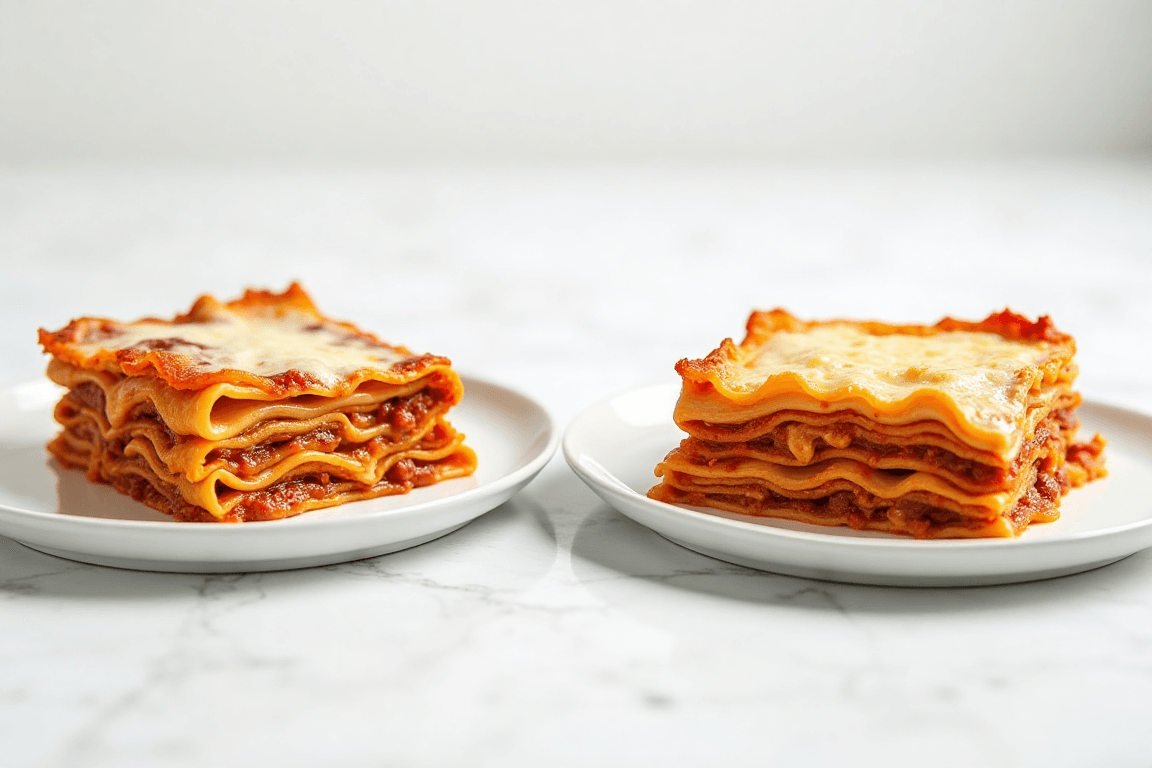Italian vs American Lasagna: The Ultimate Comparison
When it comes to comfort food that brings family together, lasagna stands at the absolute pinnacle of crowd-pleasing dishes. But let me tell you something that changed my culinary world: discovering the dramatic differences between authentic Italian lasagna and its American cousin was a complete game changer for my cooking repertoire. Growing up in an Italian-American household, I thought I knew lasagna until I traveled to Bologna and experienced the real deal. The contrast was mind-blowing! The textures, flavors, and techniques are worlds apart, and understanding these differences will take your pasta game to the next level. Whether you’re team Italian or team American (or just team delicious food), knowing how these two versions differ will transform how you approach this beloved dish forever.
Why You’ll Love Learning These Differences
Understanding the nuances between Italian and American lasagna opens up a whole new world of flavor possibilities. The Italian version showcases the delicate balance of a proper ragù (not “meat sauce”!) with creamy béchamel, while the American adaptation celebrates the melty goodness of multiple cheeses and hearty tomato sauce. Mastering both techniques gives you versatility in your cooking arsenal – go authentic when you want to impress food-savvy friends or stick with the American classic when comforting familiarity is the goal. The beauty is that once you know the key distinctions, you can mix and match elements to create your perfect hybrid version. Trust me, this knowledge is freakin’ delicious in practice!
Key Ingredients Comparison
Italian Lasagna Ingredients
- Pasta: Fresh egg pasta sheets (sfoglia) rolled extremely thin
- Sauce Base: Ragù alla Bolognese (slow-cooked meat sauce with minimal tomato)
- Cheese Component: Béchamel sauce (white sauce made from butter, flour, and milk)
- Meat: Ground beef and pork, sometimes veal, pancetta, or prosciutto
- Cheese Variety: Parmigiano-Reggiano only, used sparingly
- Herbs/Seasonings: Minimal – just bay leaf, salt, pepper, and perhaps nutmeg
American Lasagna Ingredients
- Pasta: Dried lasagna noodles, often with ruffled edges
- Sauce Base: Tomato-heavy meat sauce or marinara
- Cheese Component: Ricotta cheese mixture (often with eggs and herbs)
- Meat: Ground beef or Italian sausage
- Cheese Variety: Abundant layers of mozzarella, ricotta, and Parmesan
- Herbs/Seasonings: Generous Italian seasoning mix – oregano, basil, parsley, garlic
Optional Add-ons
- Italian Enhancements: Wine in the ragù, finely chopped vegetables (soffritto)
- American Enhancements: Bell peppers, mushrooms, spinach, extra garlic, red pepper flakes
Cooking Instructions
Italian Lasagna Preparation
- Make the Ragù:
- Finely chop onion, carrot, and celery for the soffritto base
- Sauté in olive oil and butter until soft and translucent
- Add ground meats and brown thoroughly
- Add a small amount of tomato paste and tomato sauce
- Pour in red wine and allow to reduce
- Simmer on very low heat for 3-4 hours, adding beef stock as needed
- The final sauce should be thick and rich with minimal liquid
- Prepare Béchamel:
- Melt butter in a saucepan
- Add flour to create a roux and cook until light golden
- Gradually whisk in warm milk
- Season with salt, pepper, and freshly grated nutmeg
- Cook until thickened but still pourable
- Assembly:
- Use a large, shallow baking dish
- Start with a thin layer of ragù
- Add a single layer of pasta sheets (no overlapping)
- Spread a thin layer of béchamel
- Add another thin layer of ragù
- Sprinkle sparingly with grated Parmigiano-Reggiano
- Repeat layers until all ingredients are used, ending with béchamel and Parmigiano
- Total layers should be 5-6 thin layers
- Baking:
- Bake at 350°F (180°C) for 30 minutes
- The lasagna is done when the edges are just starting to get crispy and the top is golden
- Allow to rest for 15 minutes before cutting
American Lasagna Preparation
- Prepare the Sauce:
- Sauté onions and garlic in olive oil
- Add ground beef or Italian sausage and brown thoroughly
- Pour in crushed tomatoes and tomato sauce
- Add generous Italian seasoning, salt, and pepper
- Simmer for 1-2 hours until flavors meld
- Make Cheese Mixture:
- Combine ricotta cheese with beaten eggs
- Mix in grated Parmesan cheese
- Add chopped parsley and dried herbs
- Season with salt and pepper
- Cook Pasta:
- Boil lasagna noodles until al dente
- Drain and rinse with cold water to prevent sticking
- Lay flat on kitchen towels until ready to use
- Assembly:
- Spread sauce on the bottom of a deep baking dish
- Arrange noodles in a single layer, overlapping slightly if needed
- Cover with ricotta mixture
- Add a generous layer of meat sauce
- Sprinkle generously with shredded mozzarella
- Repeat for 3-4 thick layers, ending with sauce and mozzarella
- Top with additional Parmesan cheese
- Baking:
- Cover with foil and bake at 375°F (190°C) for 25 minutes
- Remove foil and continue baking for another 25 minutes
- The lasagna is done when cheese is bubbly and golden brown
- Let stand for at least 15 minutes before serving
Tips for Avoiding Common Mistakes
Italian Lasagna Tips
- Don’t oversauce the layers – each should be thin and delicate
- Never pre-cook fresh pasta sheets; they’ll cook perfectly in the oven
- Allow the ragù to cool before assembling to prevent soggy pasta
- The finished lasagna should be firm enough to hold its shape when cut
- Authentic Italian lasagna isn’t meant to be overly cheesy or saucy
American Lasagna Tips
- If using no-boil noodles, add extra sauce as they’ll absorb more moisture
- Completely cover noodles with sauce to ensure they cook properly
- For best results, shred your own mozzarella (pre-shredded contains anti-caking agents)
- Let the lasagna set before cutting to prevent it from falling apart
- The edges of the baking dish make for the best crispy pieces!

Storage and Reheating Instructions
Both styles of lasagna taste even better the next day! Here’s how to store and reheat them properly:
Storage:
- Cool completely before refrigerating
- Cover tightly with foil or transfer to airtight containers
- Refrigerate for up to 4 days
- Freeze for up to 3 months (wrap individual portions in plastic wrap, then foil)
Reheating:
- Refrigerated: Bake covered at 350°F (180°C) for 20-30 minutes until heated through
- Frozen: Thaw overnight in refrigerator, then reheat as above (or bake from frozen at 375°F/190°C for 1 hour)
- Individual Portions: Microwave on 50% power with a damp paper towel on top

FAQ
Can I make Italian lasagna with dried pasta sheets?
Yes, but the texture won’t be quite the same. If using dried sheets, look for the thinnest variety possible and consider pre-cooking them briefly. The best substitute for homemade is fresh pasta sheets from specialty stores.
What’s a good substitute for ricotta in American lasagna?
Cottage cheese works well as a substitute for ricotta – just drain it first and process briefly in a food processor for a smoother texture. Alternatively, you can make a béchamel sauce for a creamier filling more similar to Italian style.
My American lasagna is too watery. What went wrong?
This usually happens when the sauce is too thin or the ricotta mixture contains too much moisture. Make sure to simmer your sauce until thick, drain ricotta if it seems watery, and let the lasagna rest for at least 15 minutes before cutting.
Can I make either version vegetarian?
Absolutely! For Italian lasagna, substitute the ragù with a mushroom-based sauce or roasted vegetables. For American lasagna, use a hearty marinara and bulk it up with sautéed vegetables like zucchini, mushrooms, and spinach.
Why does my Italian lasagna fall apart when serving?
Italian lasagna needs proper resting time (at least 15 minutes) to set up correctly. Also, make sure your béchamel is thick enough to act as a proper binder between layers.
Conclusion
Understanding the difference between Italian and American lasagna isn’t just about culinary knowledge—it’s about connecting with two distinct cultural approaches to comfort food. The Italian version, with its delicate layers and sophisticated balance of flavors, is perfect for those special occasions when you want to show off your cooking prowess. Meanwhile, the hearty, cheese-laden American adaptation offers that nostalgic, stick-to-your-ribs satisfaction that’s perfect for family gatherings or potlucks.
What I love most about knowing both traditions is the freedom to pick and choose elements from each, creating my own perfect hybrid that honors both my Italian heritage and American upbringing. There’s something magical about sharing these dishes with loved ones and seeing their reactions to either the familiar comfort of American lasagna or the surprising elegance of authentic Italian lasagna.
I’d love to hear which version you prefer or if you’ve created your own perfect hybrid! Drop a comment below or share your lasagna adventures on social media. Lasagna, in any form, isn’t just food—it’s a freakin’ delicious way to share love through layers of flavor. Buon appetito!

